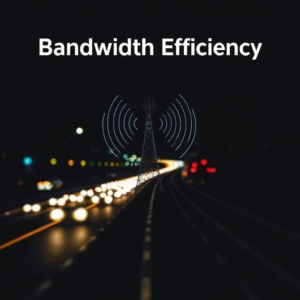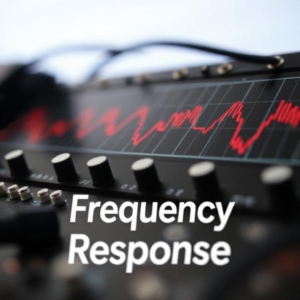1. Bandwidth Efficiency
Bandwidth Efficiency refers to how well a communication system uses the available bandwidth (the frequency range) to send information. Bandwidth is like the “capacity” of a communication channel, which determines how much data can be transmitted at a time.
- Think of it like a highway: The wider the highway (higher bandwidth), the more cars (data) can travel at once. Bandwidth efficiency is about using that highway as effectively as possible.
Why it matters:
- The more data you can send using less bandwidth, the more efficient the system is.
- High bandwidth efficiency means you can send more information in a given amount of time without needing extra resources (like additional frequencies or channels).

How it’s measured:
Bandwidth efficiency is usually measured in bits per second per Hertz (bps/Hz). This means how many bits of data can be transmitted for each Hertz of bandwidth.
For example:
- If you’re using a 1 MHz bandwidth to transmit data and you send 1 million bits per second, your bandwidth efficiency is 1 bit per Hz.
- If you send 2 million bits per second with the same bandwidth, your efficiency is 2 bits per Hz.
In Summary:
Bandwidth efficiency is about sending more data with less bandwidth. The higher the efficiency, the better the system is at using the available frequency range.
2. Power Efficiency
Power Efficiency refers to how effectively a communication system uses power to transmit information. Power is like the energy used to send a signal from one point to another.
- Think of it like lighting a bulb: If you can light a bulb with less power, you’re using power more efficiently. Similarly, in communication, you want to use the least amount of power to send data effectively.
Why it matters:
- Less power means less energy consumption and lower costs.
- Power efficiency is crucial when transmitting over long distances or when working with limited power resources (like in satellites or mobile devices).
How it’s measured:
Power efficiency is typically measured by how much data can be transmitted per unit of power. A system that sends more data with less power is considered more power-efficient.
In Summary:
Power efficiency is about using less energy to send the same amount of information. The more power-efficient the system, the less energy it needs to operate.
Comparison Between Bandwidth and Power Efficiency
- Bandwidth Efficiency is about how much data can be sent through a given frequency range.
- Power Efficiency is about how much energy is used to transmit that data.
Example:
Imagine you’re sending a message via radio:
- High Bandwidth Efficiency means you can send more messages in the same radio frequency range.
- High Power Efficiency means you can send those messages using less energy.
Ideally, you want both high bandwidth efficiency (to send more data) and high power efficiency (to save energy), but often improving one can impact the other. For instance, transmitting at higher frequencies (which might increase bandwidth efficiency) can sometimes require more power, reducing power efficiency.
In Summary:
- Bandwidth Efficiency is about how much data you can send through a given frequency.
- Power Efficiency is about how little power you need to send that data.
Both are key factors in making communication systems work well, but sometimes you have to balance them based on the specific needs of the system.











